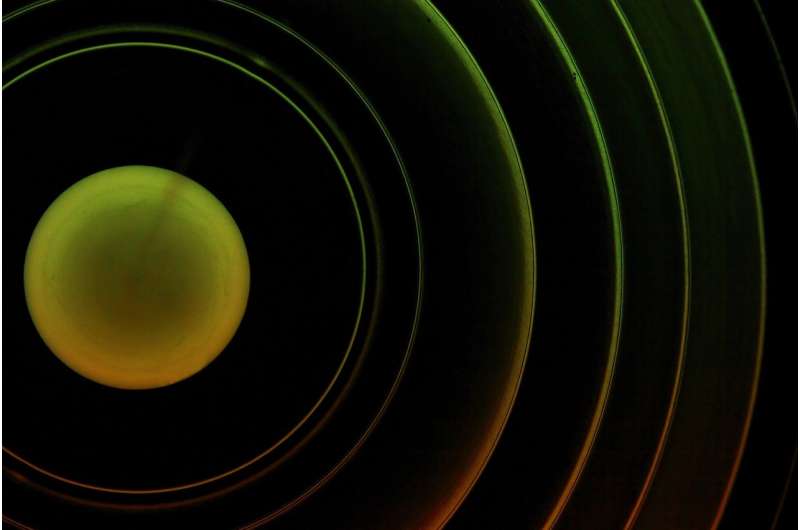Probing the properties of magnetic quasi-particles

Researchers have for the first time measured a fundamental property of magnets called magnon polarization—and in the process, are making progress towards building low-energy devices.
The existence of magnon polarization has been a theoretical idea in physics for almost 100 years but no one has proved its existence.
Scientists at the University of Leeds and the Tohoku University in Japan set out to try and show it exists by measuring it. Their findings have just been published in the journal Physical Review Letters.
Magnons are quasi-particles inside of magnetic materials which are in a continuous process of creation and destruction. They are polarized which allows then to be distinguished as clockwise or anticlockwise (circular polarization), up or down—and left or right (linear polarization).
There is intense interest in the polarization properties of magnons because physicists believe it could be exploited for transporting information in low-energy electrical devices, a field of study called spintronics.
The scientists aimed to measure magnon polarization in one of the most frequently used magnets in spintronics research, the compound yttrium iron garnet. In many magnets, only anticlockwise magnons exist. But in yttrium iron garnet, both anticlockwise and clockwise polarized magnons were predicted, making it a particularly exciting material to measure.
The team set out to make this measurement using polarized neutron scattering. This involves preparing neutrons in a specific quantum spin state ('up' or 'down') and firing them at a magnet in a focused beam.
In the experiment, most neutrons passed straight through the magnet, not interacting at all—making measurements particularly difficult. But, a small number of the neutrons collided with magnons and scattered out of the magnet in all directions. A detector measured the neutrons as they flew out of the sample. By analyzing the location, energy and final spin state of the neutrons, the magnon properties were revealed.
Crucially in this work, by comparing the spin state of the neutrons before and after the scattering, the clockwise or anti-clockwise polarization of the magnons was determined.
Dr. Joseph Barker, from the School of Physics and Astronom at Leeds, said: "In Physics, theories remain as predictions until experimental measurements confirm if they are correct or not. A famous example is the search for the Higgs Boson, but there are many untested theories across the sciences.
"Magnon polarization has recently become an important topic in spintronics so it was the perfect time to try and measure it and verify that it exists."
Dr. Barker added: "The experiments and analysis were difficult and complex. In fact, it took two attempts, once in the United States and then in France, to perfect the experimental method.
"We also had to create a precise computer model to ensure we understood what we were seeing correctly because the neutron scattering measurements come from a series of physical processes which cannot be untangled into individual parts."
Researchers can now focus their studies on how to exploit the polarization of magnons for making new types of spintronic devices for low energy technology.
The research was funded by The Royal Society, Japan Society for the Promotion of Science Grant-in-Aid for Scientific Research, JST ERATO, Tohoku University GP-Spin Program, US Department of Energy and the US-Japan Cooperative Program on neutron scattering.
More information: Y. Nambu et al, Observation of Magnon Polarization, Physical Review Letters (2020). DOI: 10.1103/PhysRevLett.125.027201
Journal information: Physical Review Letters
Provided by University of Leeds




















